An Introduction to Futures Thinking
Futures thinking is a cross-disciplinary way of considering the possible impact of innovations and emerging trends on the future. In futures thinking, we look for glimpses into the future and imagine how they may interact or influence future outcomes. In some ways, futures thinking is more mindset than methodology, more exploration than science. Futurists consider how the world may be different in the future than it is today. The goal of futures thinking is not to predict the future but rather to imagine and explore multiple possible futures.
As we look 10 to 15 years into the future, we recognize from the beginning that whatever we come up with will be wrong. No one can predict the future with 100% accuracy. Instead, by identifying and understanding conditions that could influence future outcomes, we explore possibilities and consider their potential impacts on our organizations, marketplaces, and professions/industries. This exploration helps us envision possible futures that are very different than the present. These visions are most often shared as scenarios or snapshots. These stories help us see ourselves in a particular future.
In a world where change is constant, we must always be looking toward the future to help us prepare. Considering what may happen enables us to be more prepared for whatever ultimately unfolds. Not only can we prepare for change through futures thinking. We can also use futures thinking to expand our capacity for change and influence the future. By forming a shared vision of our preferred future, we can identify actions to take today to enable that desired future. Or we can work to prevent a less desirable future. By systematically thinking about and discussing the future, we create agency to influence, change, and prepare for it through our individual and collective decisions and actions.
Signals and Drivers of Change
The Institute for the Future (IFTF) – a pioneer in futures thinking – often quotes a pioneer of cyberpunk science
fiction, William Gibson, who once said:
“The future is already here; it just isn’t very evenly distributed”.
Futurists are constantly looking for signs of the future in the present. IFTF calls these signs signals and drivers of change, below are definitions guided by their work.
A Signal
is something happening today that could be a clue to the future – a hint of what might come. This could be a new technology, system, approach, business, etc. It could be the first demonstration of something new, or something that is taking a big step up in significance. It could be the breakdown of an old system or technology – something that is about to change. Often, we identify a signal because it surprises us. If you react with a “hmm, that’s new”, that is a good clue you may have found a signal. Each signal, even if small or little-known, has the potential to change the future in a unique way.
Drivers
are important changes that are underway. These powerful forces of change move us toward particular futures. Drivers are trends or bigger picture phenomenon driving us in a particular direction. They are often measurable directions of movement. They help answer the question: why are we going from this to that? It could be a new scientific discovery, a change in public opinion, an uptick in a particular outcome, a cutting-edge technology, or even a change in cultural or social patterns. Think of drivers as pushing us toward a particular outcome.
Often a collection of signals helps us to identify a driver. There are many well-known drivers of change that are often discussed in the media – the rise of artificial intelligence (AI), the Internet of Things, climate change, or falling birth rates. But there are also lesser-known drivers of change like microlearning, anticipatory intelligence, or deep fake videos. Sometimes these lesser-known drivers come into the spotlight or accelerate, and sometimes they fade into the background as we take action to counteract them. An example is that when we first wrote this guide for our clients in 2021, the shrinking workforce was a lesser-known driver of change. Today, this is a well-known phenomenon. There are also likely to be unique drivers of change specific to your marketplace, industry, or profession that follow similar patterns – and that your organization may be able to impact or take advantage of through futures thinking.
Finding Signals and Drivers
As we think about signals and drivers, we must look beyond the narrow focus of our personal and professional sphere. Engaging with others helps us widen our perspectives. Sometimes we use frameworks like STEEPLES to guide us in looking across multiple spheres for drivers of change, in this case: social, technological, economic, environmental, political, legislative, ethical, and spiritual spheres.
A simple place to find signals and drivers of change is through an internet search. A search on “the future of (fill in the blank)” is likely to lead to a number of interesting drivers, and perhaps some signals, in articles, blogs, and videos. Many futurists publish lists of drivers they are seeing. Wired magazine is one such source. Deloitte and McKinsey often publish white papers on drivers of change. Or, you could join the community at urgentoptimists.org to see what other amateur futurists are talking about.
Signals can also be found by looking more intently as you go about your day-to-day life. For example, do you remember the signs on the windows at fast food restaurants during the pandemic that said, “no cash accepted”? Those could be interpreted as signals of a world where electronic payments are becoming ubiquitous, not just for large purchases, but also for small transactions.
Your news feed and old-fashioned newspaper might feature stories about unique things that are happening in your local area and those might represent a signal of change.
Signals and drivers abound. The key to determining their relevance is to consider how the development might shift the future you are exploring. Ask yourself: How might this make our marketplace different 10 years from now? What is this aspect of our world like today, and how would that be different in the future because of this driver?
Using Signals and Drivers
After identifying signals and drivers, discuss and combine them to explore alternative futures. Consider how your
work or world may be different as a result of the drivers of change you have identified. Share drivers and signals
with colleagues, ask them for their input on how each might drive significant changes for our world and your
organization.
Consider possible and probably futures from a variety of vantage points and begin to form a shared vision of a preferred future. Or define a future you would like to prevent. Create scenarios and stories from the future to help make your imagined vision more tangible and sharable. Doing so helps jump start conversations and connect others to this work so you can explore and shape the future together.
Personally, futures thinking helps us increase our resiliency through increased hope and optimism, more developed concrete imagination skills, and improved mental flexibility. Collectively, futures thinking allows us to consider new shared possibilities, prepare for change in its many forms, influence the future, and make more strategic organizational choices. Get started by looking for signals and drivers of change as you go about your everyday life. You will be surprised how many you find.
If you would like help bringing futures thinking to your organization,
please Contact Us or reach out to skusibab@EssentiamStrategy.com .
We would love to explore the future with you!
Posted By - support
Posted on - May 8, 2023










